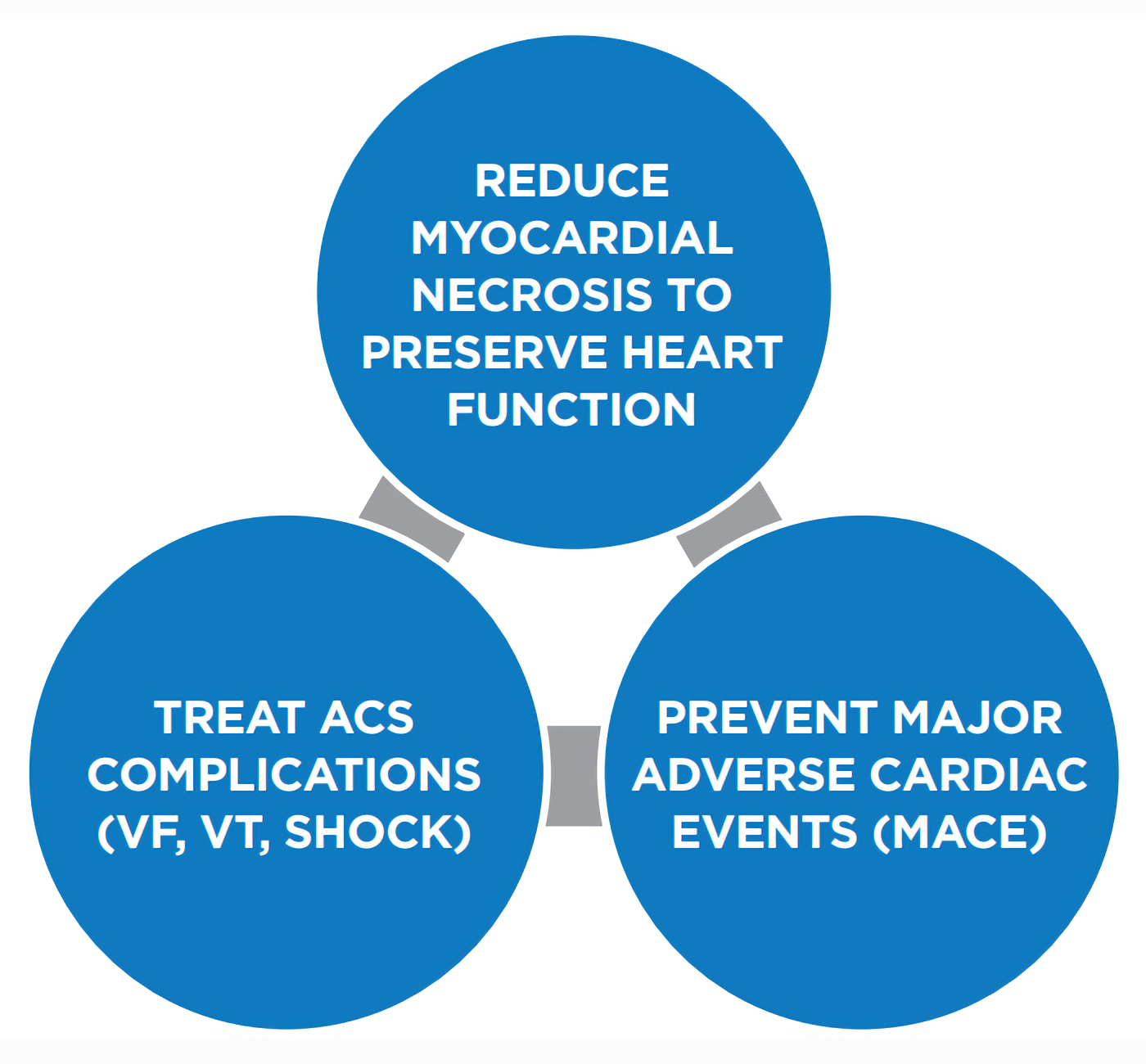Your cart is currently empty!
For individuals with acute coronary syndrome (ACS), proper care starts during the call to EMS. First responders must be aware of and look for signs of ACS. Quick diagnosis and treatment yield the best chance to preserve healthy heart tissue. It is very important that health care providers recognize individuals with potential ACS in order to initiate evaluation, appropriate triage, and time management.

Early EMS communication allows for preparation of emergency department personnel and cardiac catheterization lab and staff. Once the ACS patient arrives at the receiving facility, established protocols should direct care. The shorter the time is until reperfusion, the greater the amount of heart tissue that can be saved, and the more optimal the overall outcome. Major adverse cardiac events (MACE) include death and non-fatal myocardial infarction. Life-threatening complications of ACS include ventricular fibrillation, pulseless ventricular tachycardia, bradyarrhythmias, cardiogenic shock, and pulmonary edema. EMS should have the capacity to perform ECGs on scene and on the way to the hospital. The receiving hospital should be made aware of possible ACS, especially ST-elevation myocardial infarction elevation (STEMI) and non-ST-elevation myocardial infarction (NSTEMI).
